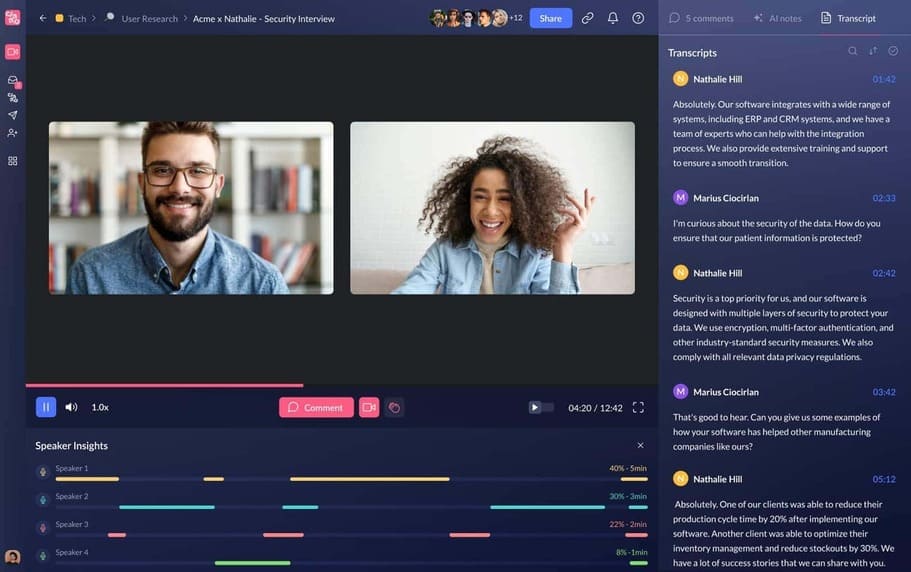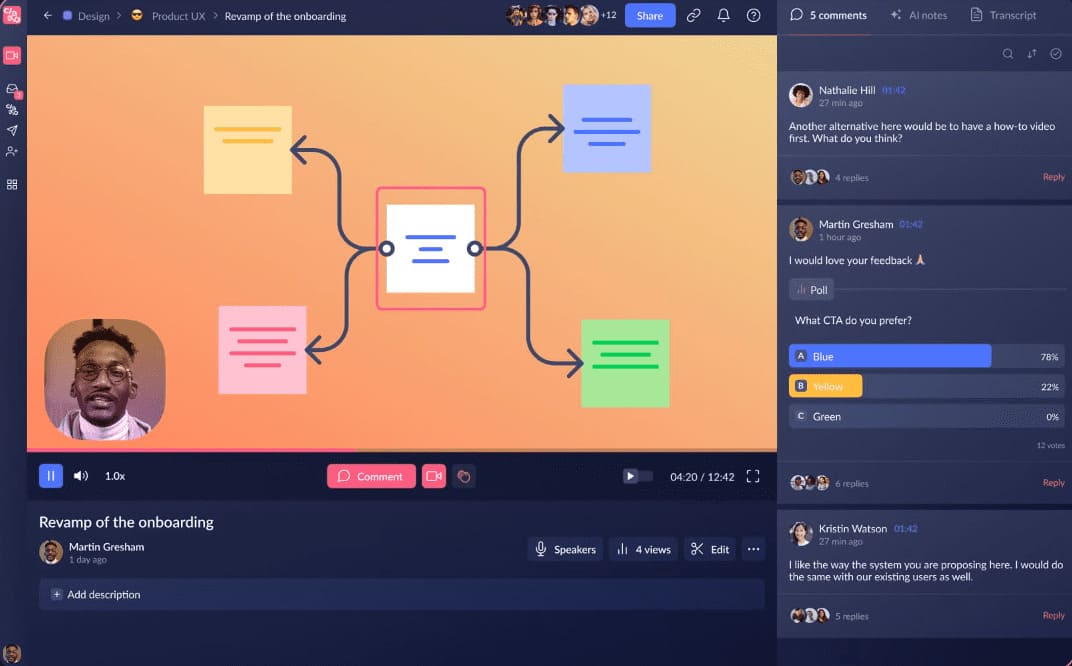Why are negotiation tactics so important?
The benefits of negotiation
I’ve always found it crazy that people don’t negotiate. Like okay, I know you can’t negotiate in a supermarket but there are many other situations where you can, and you’re even sometimes expected to negotiate!
For instance, when I put an item up for sale on a classifieds website, I usually ask for more than what I’m actually expecting. This way, if my interlocutor negotiates, I actually obtain exactly the amount I was expecting while giving the impression of making a concession! And if my interlocutor doesn’t negotiate… Well, I obtain more than what I was expecting!
You’ll have understood, you have every interest in negotiating. And this is true no matter your profession, but even more if you’re a salesperson! Knowing how to negotiate will help you obtain the best terms when closing a deal, but also increase your overall win rate as you’ll know how to adjust your conditions to satisfy your interlocutor!
Why do you need to have tactics to negotiate

Now that you know why you need to negotiate as much as possible, you still need to learn how to do it!
Being a good negotiator requires knowing and mastering effective negotiation tactics.
Negotiation tactics are strategic actions or techniques employed to achieve favorable outcomes in a negotiation. These methods involve influencing the other party, by leveraging emotions or employing persuasive techniques for instance.
If your interlocutor has a solid negotiation strategy, with good tactics and you don’t, it’s as if you fought against Mike Tyson in a boxing match. You’ll get crushed. I mean your interlocutor will obtain exactly what you want while you’ll concede way too much without even noticing!
On the other hand, if your interlocutor doesn’t have negotiation tactics, and you do, then you’ll have the upper hand and you’ll basically be able to obtain whatever you want!
Let’s see actual negotiation tactics together!
7 GREAT negotiation tactic

Prepare your negotiation
Okay, I agree, strictly speaking, it’s not a negotiation tactic. But the first thing to know is that a negotiation needs to be prepared in advance.
You need to set your objective. For that, I usually make a table with all the aspects that could be negotiated, and I set a threshold, corresponding to what would be a great deal for me, and a lower limit, below which I couldn’t accept the deal.
For instance, it could look like that:

The anchoring tactic
Here we are! The first negotiation tactic! The anchoring tactic is a strategy you can employ in basically any situation. This strategy consists of making the first offer. By doing that, you set the tone of the negotiation and you prepare your interlocutor to accept something close to your objective.
Actually, when you don’t have a clear idea of what would be a fair price for something, you tend to rely on the first number you hear. If you think something will cost around $20 and the vendor says it costs $100, you’ll be glad if you can obtain it for $70, right? Well, this is exactly why the anchor tactic is so effective!
The “extreme offer” tactic

This strategy is quite similar to the anchoring tactic. You ask something unreasonable and then make small concessions.
If you play your cards right, you'll have a significant leeway and can give the impression of making many concessions while still achieving your initial goal.
Let’s take an example. You want to sell a chair for $50. Start by asking $200. Then your interlocutor will try to lower the price. Your objective is to make him/her believe you’re making substantial concessions, don’t say yes right away! This way, you’re almost sure to sell at your target price (or more!)
The concession tactic
As we were just talking about concessions, let’s talk about the concession tactic!
This tactic is simple: never accept something without making your interlocutor make a concession. This way, you directly reduce the offer of your interlocutor before even making a counter offer.
Again, let’s illustrate this tactic: imagine you are negotiating with a client who wants to purchase software developed by your company:
You:
- “Thank you for considering our software. Our offer is $50 per user per month.”
Client
- “That seems a bit steep. How about $40 per user per month?”
You:
- “I appreciate your proposal. I can certainly work with that, but to make it viable, we'd need a commitment for a minimum of 100 users at that rate.”
Client:
- “Hmm, 100 users is a bit more than we initially planned, but we can make it work.”
You:
- “Great to hear your flexibility. However, I’m afraid $40 per user is quite challenging. How about meeting halfway at $45 per user per month?
Here, if your initial objective was $45/month, you not only reached that objective, but also got a volume increase!
The commitment tactic

The objective of a negotiation is to make the fewest concessions possible. But it’s not an easy task… In some cases, your counterpart may become resistant if they see that you’re not making enough concessions to their liking.
This is typically the situation where the commitment tactic comes in handy. The commitment tactic consists of negotiating like your hands are tied. Giving a reason for not making concessions automatically makes your interlocutor more comfortable with it.
But again, an example is worth 1000 words:
Let’s say you’re once again a salesperson negotiating the sale of software. If the client asks to lower the implementation price, you could say that you have no control over such adjustments and, consequently, can’t offer discounted implementation prices. I assure you, the client is unlikely to press further.
The “crescendo” tactic

The “crescendo” tactic involves requesting more and more from your counterpart until reaching his/her breaking point. This way, you maximize your results and obtain the best conditions possible.
But I don’t recommend employing this tactic. It's a rather aggressive strategy, lacking respect for your interlocutor. Your counterpart might feel offended and put an end to the negotiation. And even if you obtain what you want, you’ll not make a good impression and your client is likely to never do business with you again…
I’ll still give you an example to be sure you understand the strategy. Let’s have a look at the following discussion:
Client:
- “I offer you $70 for that chair”
Vendor:
- “For $70 it’s yours!”
Client:
- “But now I’m not sure, what about $50?”
Vendor:
- “Okay but I won’t go lower than $50…”
Client:
- “I’m sorry but I just noticed the paint is a bit chipped on the back of the chair, I can’t offer more than $40 for that…”
The win-win situation

A win-win situation is what everybody wants in a negotiation. Everyone is satisfied! And as you’ll have understood, the tactic I’m talking about involves transforming your offer into something aligned with your counterpart’s objective.
And it allows me to mention another crucial element of a successful negotiation: listening to your interlocutor. Listening attentively to your interlocutor allows you to understand what he/she truly wants. And then make more adequate offers.
Here is an example to make it clearer:
During the negotiation, you understand your client tries to reduce the overall costs of his/her company. Instead of reducing the price you ask, you can insist on the cost savings your product will allow. Your client will most likely be satisfied by your arguments and accept your offer, while you’ll have maintained the price asked initially!
The “take it or leave it” tactic

Just like the “crescendo tactic”, the “take it or leave it” tactic is a bit extreme. That’s why I wouldn’t recommend you using it.
It can be useful if 2 elements are reunited:
- Your interlocutor is resistant, and you're having difficulty making progress in the negotiations
- You have alternatives and are ready to abandon the negotiation
The “take it or leave it” tactic involves issuing an ultimatum to your counterpart. Basically telling him/her that you’ll leave the table if he/she doesn’t accept that final offer.
An example to illustrate this tactic:
You have been negotiating with a seller for 10 minutes. You want to buy a chair at $50 maximum. The seller doesn’t want to go lower than $60. You tell him that your final offer is $50 and you aren’t willing to negotiate more. If he agrees, you win. If he refuses, you'll have to abandon this chair and go to another seller.
If you’re a salesperson, mastering these negotiation tactics will definitely improve your performance. But you shouldn’t stop there. Claap can take you to another level.
How Claap can help you optimize your sales process

Claap shortens your sales cycle
Claap is an AI transcription and meeting recording tool. I can already hear you “okay so why are you talking about that now?”. Well, because it’s not ONLY that.
Claap introduce claaps, 2-minute videos that are GREAT to communicate asynchronously and efficiently. So you know what that means: you can use it to communicate with your prospects. Forget about the good old-fashioned sales cycle, that requires finding a time that fits your prospect’s calendar, waiting for the day to come, and finally taking 30 minutes or 1 hour in a meeting. Now you just have to record your claap, share it on your workspace, let your prospects watch them and reply, and close the deal.
You think it’s too good to be true? A lot of companies thought so. But now they’re convinced. Alejandro, from Surfe, can attest to that:
"I've managed to shorten my sales cycle because I replace 30-minute meetings with prospects with three five-minute videos. I've literally seen ten days just fall off of that process and allow me to go quicker. " - Alejandro Salinas
Claap increases customer engagement

“But it can’t replace a meeting”, “It’s basically nothing more than a video email, right?”
Wrong, and wrong. Don’t underestimate what a claap can do. With Claap’s screen recording feature, you can easily demonstrate anything you want, explain complex topics… Then, with the edition tools, you can create a pro video. Actually, instead of showing something for 10 to 20 minutes by doing it synchronously (in a classic meeting), you only show the highlights, what your prospects will be interested in. You save time and you make your prospects save time.
And as your prospects save time, they’re more likely to take this time to interact with the content, using Claap’s collaboration features. They can ask very specific questions by selecting a specific moment and a specific part of the screen.
And a higher customer engagement means a higher conversion rate! Look at what Guillaume, from Surfe, has to say about that:
“Every time I was doing that I had like 40% conversion rates compared to like 3, 4, or 5% with normal approaches.” - Guillaume De Nacquard
Claap allows you to be available 24/7

If I told you that you can meet more prospects by working less, would you believe me? With Claap it’s possible. Claap is an asynchronous meeting tool. Once your claap is recorded, it lives in your workspace and can be viewed and commented on any time. Your prospects can even send video replies to your claaps to have a more interactive experience.
What else? Well, many things! But I’d recommend checking it out yourself! (Free plan available with no credit card required)






